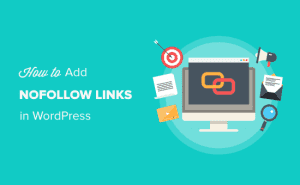After very nearly 15 years, Google has quite recently added two new connection credits to “nofollow”. This is what you have to know.

Google has as of late reported changes to the way nofollow joins are estimated. It’s convenient and ridden with a blend of suggestions – particularly given that 2019 is the year on-page positioning variables have edged in front of off-page. All things considered, in any event that is by all accounts the overall agreement among SEO specialists.
How accomplished nofollow joins work?
Here’s a case of a no follow connect:
By including the tag, you’re basically advising Google not to pass any connection juice on through this connection. This implies if a space with high authority has connected to your site in one of their websites and included a “nofollow” tag to the connection – you won’t get any SEO profit by this.
It was at first executed by Google as a hard methods through which to battle spam (think remarks in discussions and mass connection creation). Anyway it appears like they’ve turned on their situation here.

What’s changed?
All things considered, how about we go directly to the source – this is what Google needed to state on the issue:
“When nofollow was presented, Google would not check any connection denoted this route as a sign to use inside our inquiry calculations. This has now changed.
All the connection credits — supported, UGC and nofollow — are treated as clues about which connects to consider or reject inside Search.
We’ll utilize these clues — alongside different signs — as an approach to more readily see how to properly investigate and utilize joins inside our frameworks.”
Basically, Google have chosen to add an extra two components to the nofollow framework which will permit them to all the more precisely ascribe and disperse connect esteem .
“Supported connection nofollow labels”
rel=”sponsored”: Google recommends utilizing this tag for limited time content.
“UGC nofollow labels”
rel=”ugc”: Google recommends utilizing this tag for content inside remarks, audits, Q&A’s ect.
Do I need to change my current nofollow labels?
In short – no. Notwithstanding, Google are moving to what they are alluding to as a “hint model” which implies the ramifications of your nofollow labels aren’t as outright as they were under the past framework.
When are these progressions occurring?
For positioning purposes, the framework has just been set up to give Google the “hints” needed to decide interface esteem appropriation anyway from a creeping and ordering point of view – the day to look for is March 1, 2020. In the event that you’ve been depending on your nofollow labels to hinder certain pages from ordering, we would recommend you accurately execute your robots.txt and no list convention before this date.
What does this all mean?
The apparent estimation of connection value has continuously been diminishing and it appears Google is committed to actualizing a framework that supports authentic commitment among clients. Indeed, actually it could over-commoditise the land on gatherings, survey pages and Q&A pages anyway it’s a positive development regarding positioning attribution.
